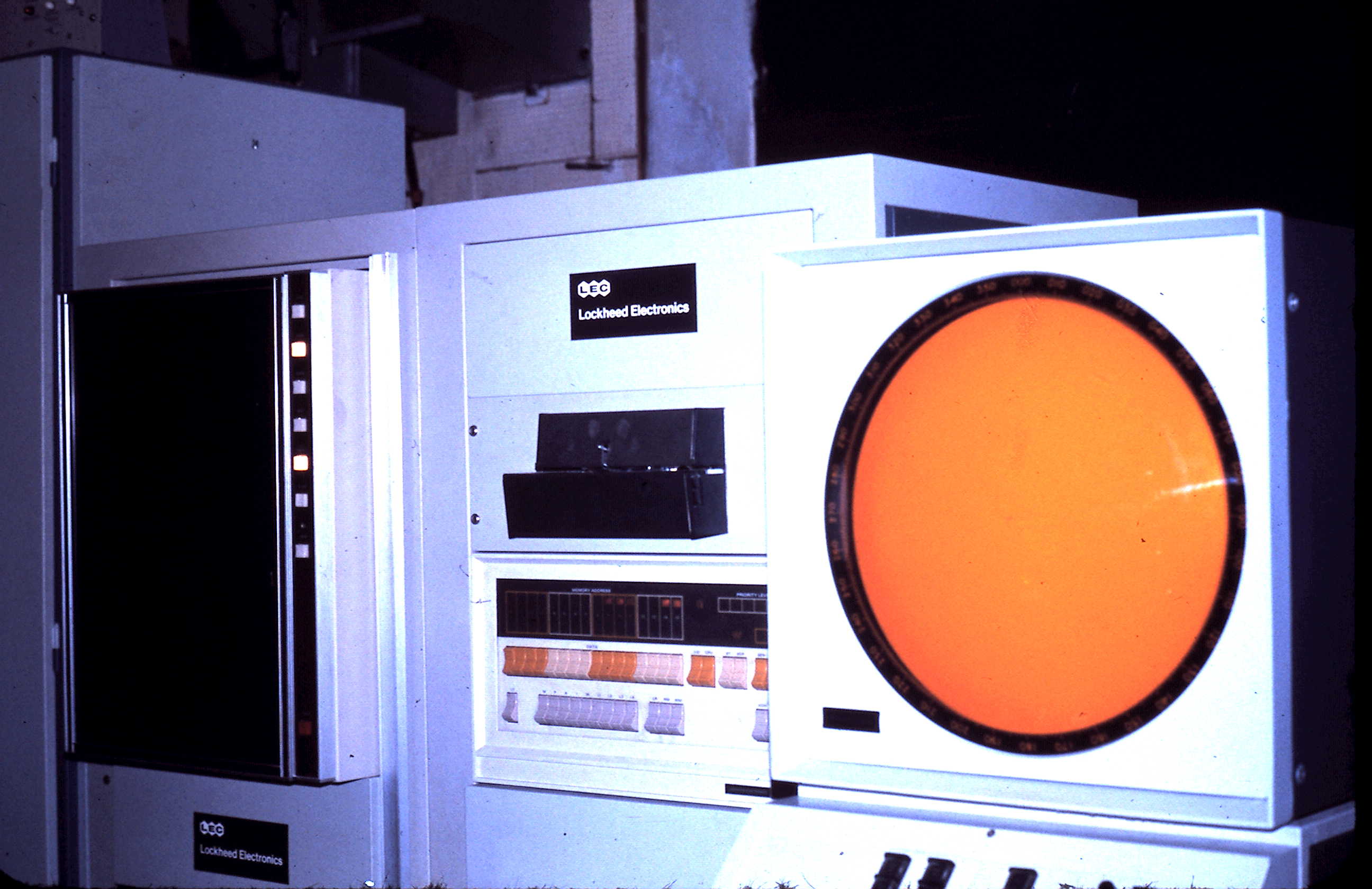Lockheed MAC-16 on:
[Wikipedia]
[Google]
[Amazon]
 The MAC-16 (or LEC-16) was a
The MAC-16 (or LEC-16) was a
"Network Aspects of the Fermilab Control System"
Fermilab, 1977
Old-engineering.tumblr.com: "Funny, it doesn't look like a Lockheed."
— ''Lockheed advertisement for the MAC-16''. Minicomputers Computer-related introductions in 1969 Products introduced in 1969 16-bit computers
16-bit
16-bit microcomputers are microcomputers that use 16-bit microprocessors.
A 16-bit register can store 216 different values. The range of integer values that can be stored in 16 bits depends on the integer representation used. With the two ...
minicomputer
A minicomputer, or colloquially mini, is a type of general-purpose computer mostly developed from the mid-1960s, built significantly smaller and sold at a much lower price than mainframe computers . By 21st century-standards however, a mini is ...
introduced in 1969 by Lockheed Electronics. One main selling point of the MAC-16 was a dedicated context switch
In computing, a context switch is the process of storing the state of a process or thread, so that it can be restored and resume execution at a later point, and then restoring a different, previously saved, state. This allows multiple processes ...
ing system that completed operations in two machine cycles. Several improved versions were introduced, including the MAC Jr., Sue, and System III, but the company dropped support for all of these in the late 1970s.
The MAC-16 was designed to support various high-performance military and civilian roles, and thus spent a considerable amount of time on guaranteeing high speed context switch
In computing, a context switch is the process of storing the state of a process or thread, so that it can be restored and resume execution at a later point, and then restoring a different, previously saved, state. This allows multiple processes ...
ing to support real-time computing
Real-time computing (RTC) is the computer science term for Computer hardware, hardware and software systems subject to a "real-time constraint", for example from Event (synchronization primitive), event to Event (computing), system response. Rea ...
. A switch to and from an interrupt handler
In computer systems programming, an interrupt handler, also known as an interrupt service routine (ISR), is a special block of code associated with a specific interrupt condition. Interrupt handlers are initiated by hardware interrupts, software ...
took only 2 cycles. The original MAC-16 operated with a 1 μS cycle time using core memory and TTL integrated circuits. Lockheed advertised the machine with the slogan "In by 12:34:45.000000, out by 12:34:45.000002". The system featured 64 interrupt levels, allowing considerable flexibility in software design.
Like any machine based on a 16-bit instruction register
In computing, the instruction register (IR) or current instruction register (CIR) is the part of a CPU's control unit that holds the instruction currently being executed or decoded. In simple processors, each instruction to be executed is loaded ...
, the original MAC-16 was able to address up to 64 kilo-words (kW, 128 kB) of RAM
Ram, ram, or RAM most commonly refers to:
* A male sheep
* Random-access memory, computer memory
* Ram Trucks, US, since 2009
** List of vehicles named Dodge Ram, trucks and vans
** Ram Pickup, produced by Ram Trucks
Ram, ram, or RAM may also ref ...
. At the time, RAM was provided in the form of hand-wired core memory
Core or cores may refer to:
Science and technology
* Core (anatomy), everything except the appendages
* Core (laboratory), a highly specialized shared research resource
* Core (manufacturing), used in casting and molding
* Core (optical fiber), ...
, which cost about $1 per word. Most MAC-16 machines thus featured considerably less than 64 kW, and 8 kW systems were common as this was all that was needed to support a Fortran compiler. Third-party memory expansion products were available for about half the cost of the Lockheed parts.
One well-known role for the MAC-16 was Lockheed's winning entry for the Federal Aviation Administration
The Federal Aviation Administration (FAA) is a Federal government of the United States, U.S. federal government agency within the United States Department of Transportation, U.S. Department of Transportation that regulates civil aviation in t ...
's "ARTS II" air-traffic control
Air traffic control (ATC) is a service provided by ground-based air traffic controllers who direct aircraft on the ground and through a given section of controlled airspace, and can provide advisory services to aircraft in non-controlled air ...
system. The original ARTS (Automated Radar Terminal System) was based on Univac
UNIVAC (Universal Automatic Computer) was a line of electronic digital stored-program computers starting with the products of the Eckert–Mauchly Computer Corporation. Later the name was applied to a division of the Remington Rand company and ...
mainframe computers, which were tube-based systems of enormous size and cost, far too expensive to be used at smaller airports. ARTS II was introduced to address the needs for smaller airports. Lockheed's entry was based on the MAC-16 and a large display system delivered by Plessey
The Plessey Company plc was a British electronics, defence and telecommunications company. It originated in 1917, growing and diversifying into electronics. It expanded after World War II by acquisition of companies and formed overseas compani ...
, providing on-screen symbology and altitude data for up to 256 aircraft. Ironically, after Lockheed won the ARTS II contest, Burroughs underbid Lockheed, and the ARTS II was based on Burroughs systems.
MAC-16s were found in numerous other roles, including the control systems for the Fermilab accelerators.HR Barton Jr"Network Aspects of the Fermilab Control System"
Fermilab, 1977
References
;Citations ;Bibliography * * {{refendExternal links
Old-engineering.tumblr.com: "Funny, it doesn't look like a Lockheed."
— ''Lockheed advertisement for the MAC-16''. Minicomputers Computer-related introductions in 1969 Products introduced in 1969 16-bit computers